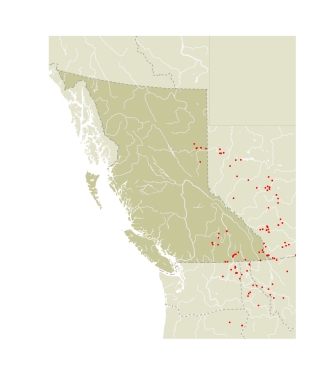AdultAdults of the Long Dash Skipper can be distinguished from Polites peckius, P. sabuleti, P. draco, and P. themistocles by the characteristics already discussed (refer to those species accounts for details), and from Hesperia species by generic characters. It can be separated from the remaining Polites species, Polites sonora, by its larger size and very different habitat choice. In P. mystic the median pale band of the ventral hindwing is indistinct, whereas in P. sonora this band is crisply distinct. Another species that can be confused with the Long Dash Skipper is the Woodland Skipper (Ochlodes sylvanoides), but the flight periods of the two species hardly ever overlap. When they do overlap, worn females of the Long Dash Skipper fly concurrently with fresh males of the Woodland Skipper.
Immature StagesSaunders (1869b) described the egg as pale green and slightly taller than broad. The mature larval head is reddish brown and edged posteriorly with white hairs. The body is brownish green and has white hairs like the head. There is also a dorsal line and lateral spots of a darker shade. The first thoracic segment of the larva is pale white, with light brown sclerotization across the dorsal surface.
SubspeciesMacNeill (1975) states that the PNW populations represent an undescribed subspecies. This is a situation analogous to that of the Tawny-edged Skipper. The type locality of the species is Hunters, NY (Brown and Miller 1980).
